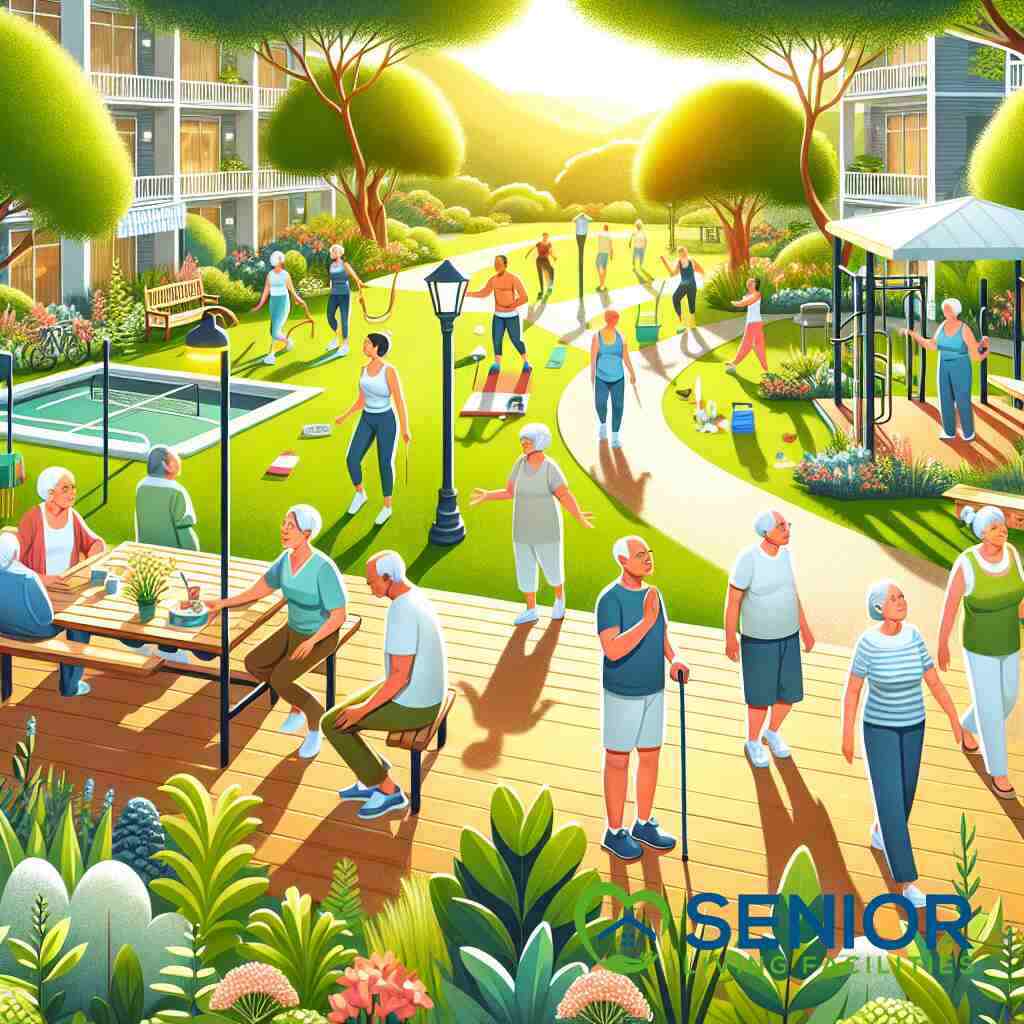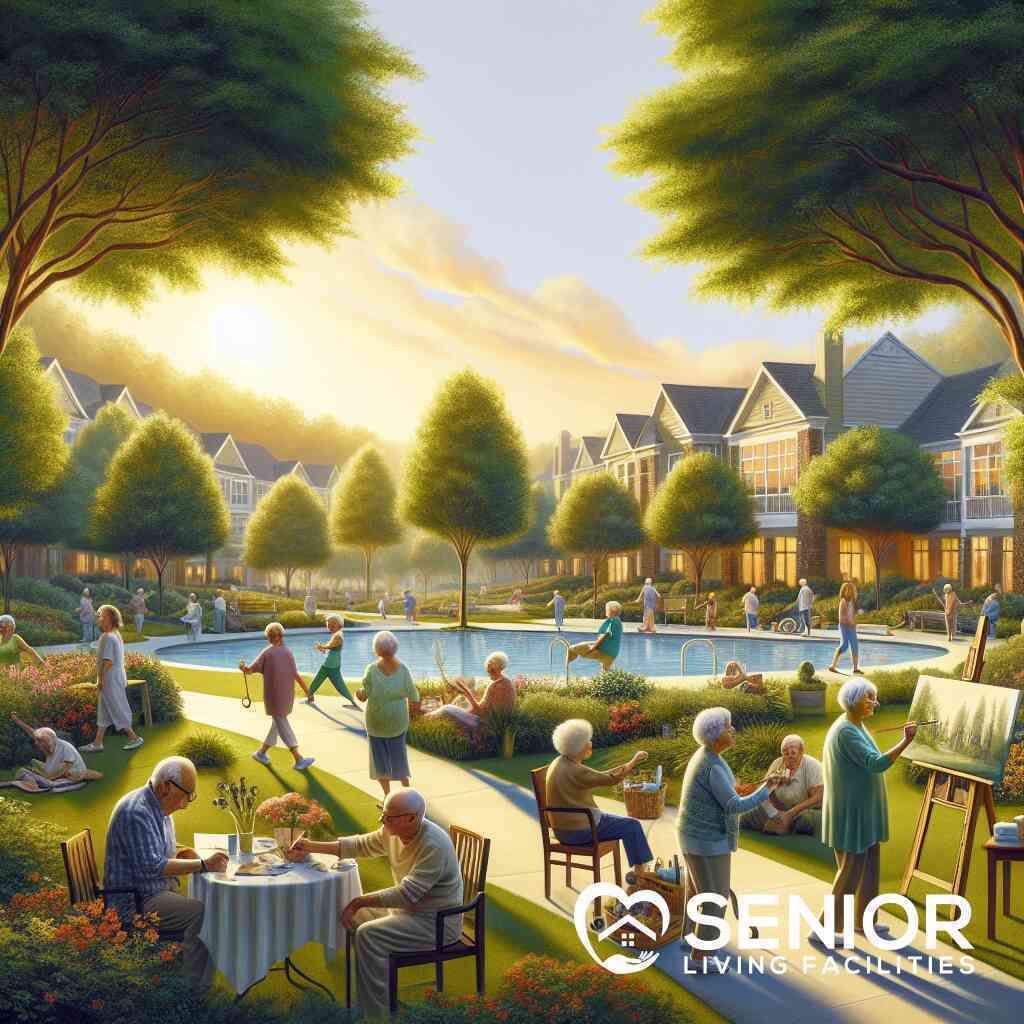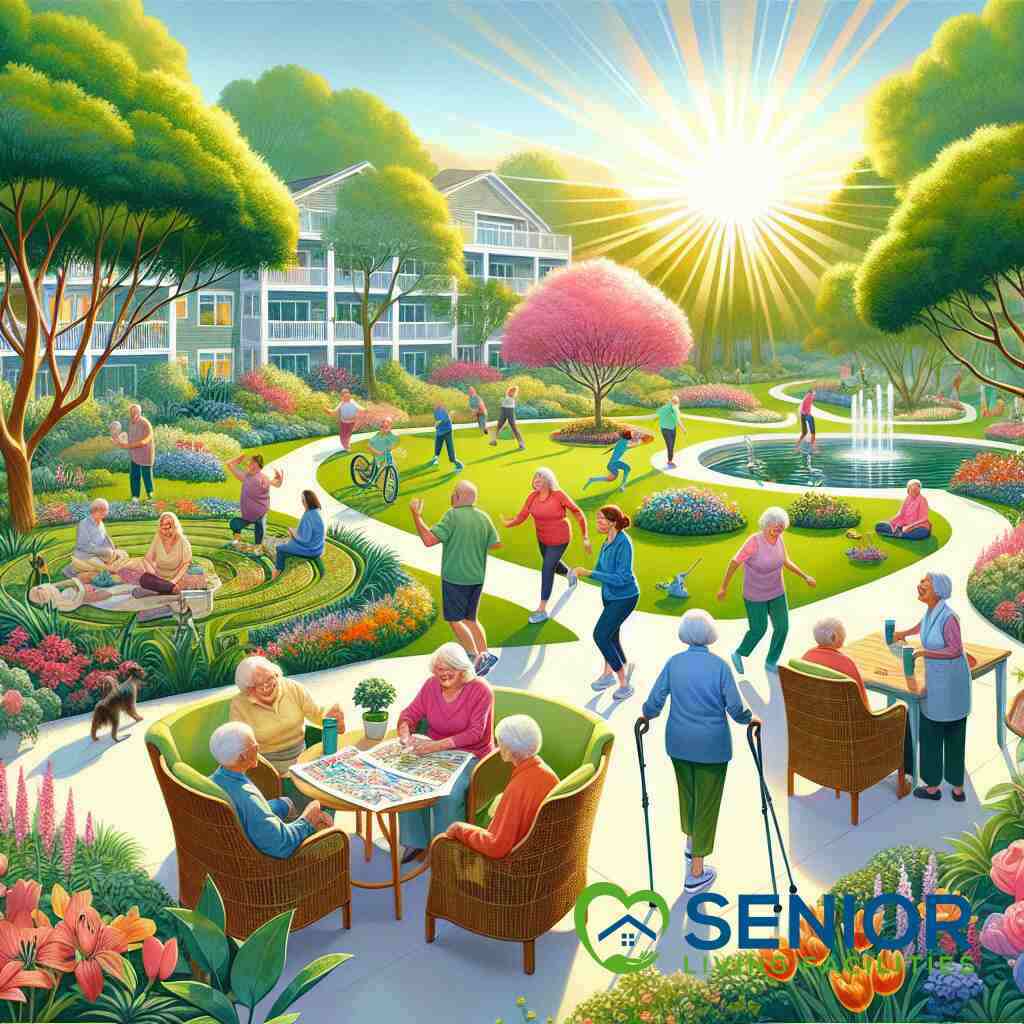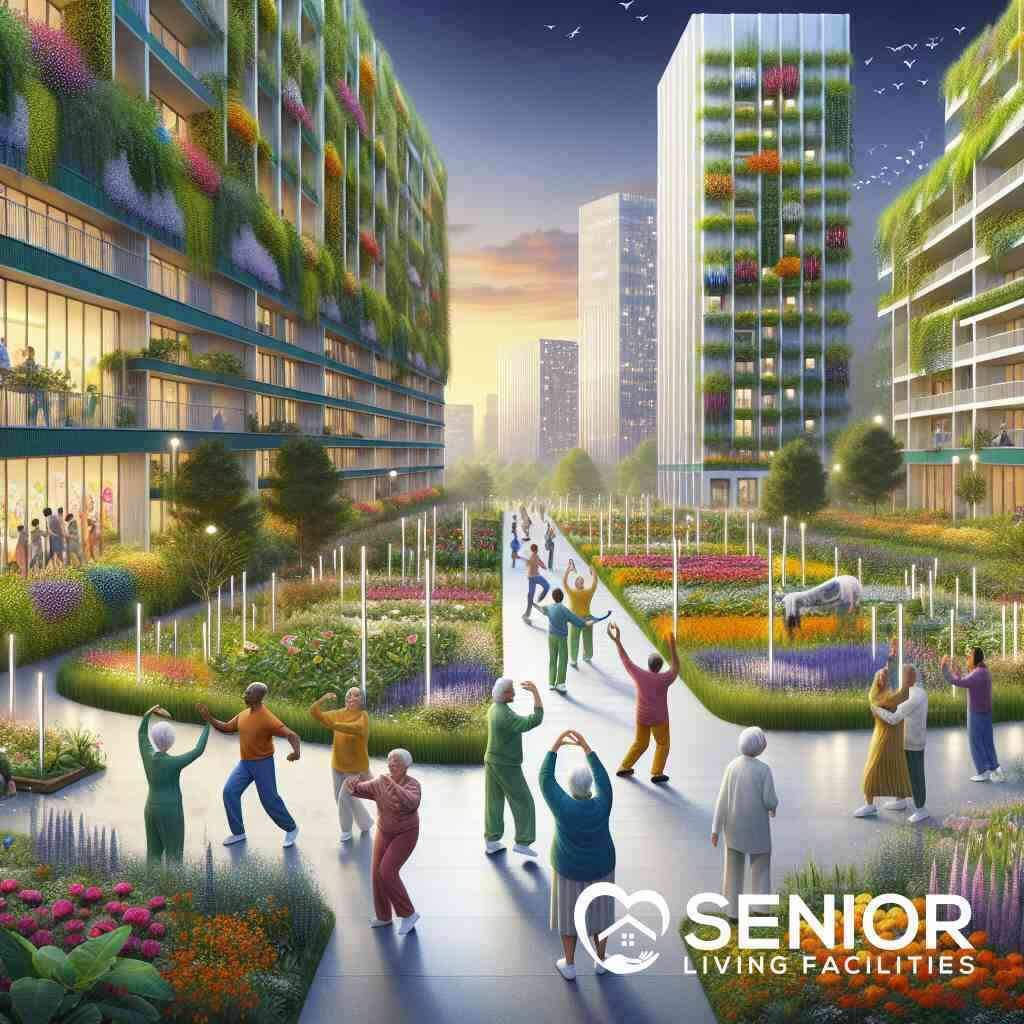
The Definition of Senior Living Adaptations in 2025
July 1, 2025
Introduction to the Future of Senior Living
Envisioning 2025: The Evolution of Senior Living Facilities
As we approach 2025, the landscape of senior living facilities is undergoing a profound transformation. These changes are driven by the need to offer personalized eldercare experiences through innovative senior living facilities. The evolution is not just about providing a place for the elderly to reside; it’s about crafting communities that cater to the emotional, social, and physical well-being of seniors. Facilities are evolving from traditional models to become multifaceted hubs offering both independence and support. Emphasis is placed on creating environments that feel like home while offering access to advanced healthcare services and social connections.
The Intersection of Technology and Elder Care Solutions
The integration of technology within senior living facilities is revolutionizing the care provided. Technological advancements in senior living, such as AI, IoT devices, and telehealth, are enhancing the quality of life for seniors. These technologies bridge the gap between independence and necessary healthcare, allowing seniors to age in place with greater ease. Smart home technologies for seniors offer comprehensive solutions that improve safety and communication, ensuring that residents receive prompt attention when needed. As technology continues to advance, eldercare solutions will evolve to offer seamless integration into daily life, promoting autonomy and enhancing care quality in senior living environments.
Understanding the Needs of a Diverse Aging Population
The senior demographic is diverse in its needs, preferences, and expectations. Personalized eldercare experiences are essential to cater to this varied group, focusing on creating communities for seniors 55+ that respect individuality. Facilities are increasingly aware that one-size-fits-all solutions do not address the complexities of an aging population. As a result, there is a growing emphasis on offering tailored eldercare in environments where seniors can access both community engagement and private retreat. The goal is to provide senior housing options that reflect the diversity and evolving needs of older adults, ensuring that every senior finds a living arrangement that meets their unique expectations and health requirements.
Technological Innovations Transforming Senior Living
Smart Home Technologies for Seniors: A Comprehensive Guide
Smart home technologies are revolutionizing senior living in the state of, offering a plethora of benefits that enhance the daily lives of seniors. These systems, including automated lighting, voice-activated assistants, and smart thermostats, provide convenience and improve safety. For instance, fall detection sensors can alert caregivers or medical professionals in the case of an emergency, delivering timely interventions. Additionally, medication reminders and digital assistants help seniors manage their health independently without the fear of missing crucial doses. As these technologies become more advanced, the integration within senior living communities in Arizona is expected to provide unprecedented support, allowing seniors to maintain their independence while being safe.
Technological innovations in senior living don’t stop at convenience; they also address communication and social needs. Video conferencing and social platforms designed for seniors ensure they remain connected with family and friends despite physical distances. This connectivity plays a crucial role in combating loneliness and fostering a sense of community. As residents engage more with technology, senior living facilities are adapting by offering tech education workshops, helping seniors harness the full potential of smart home technologies for improved living standards.
Digital Integration in Senior Communities: Bridging the Gap
Digital integration within senior living facilities is drastically changing the caregiving landscape. By incorporating digital health records and telehealth services, facilities provide seniors with immediate access to their health information and professional consultations from healthcare providers. This digital shift is particularly beneficial for residents in remote locations, reducing the need for travel and associated stress. Accessible senior housing in Alabama exemplifies how digital integration can enhance healthcare access and convenience, leading to better health outcomes.
Moreover, facilities are embracing wearable technology and IoT health trackers to monitor vital signs and detect health anomalies in real time. These devices facilitate proactive health management, alert caregivers to potential health risks, and track activity levels, encouraging a more active lifestyle. The fusion of health data with digital platforms enables personalized care plans, ensuring that each resident receives the tailored eldercare they require. This integration is vital in fulfilling the future of senior housing requirements, where continuous health monitoring and easy access to medical consultations are expected standards.
Geriatric Care Advancements: The Role of AI and Robotics in Elder Care
In 2025, the integration of AI and robotics will be pivotal in delivering modern senior care solutions. Robotics is being developed to assist with daily tasks, reduce the workload on caregivers, and support residents’ autonomy. These robotic aids can perform duties ranging from meal preparation to providing companionship, directly enhancing the quality of life for seniors. They offer solutions for seniors with mobility restrictions, ensuring they maintain a level of independence in their daily routines.
The role of AI in geriatric care is equally transformative, with machine learning algorithms being used to predict health issues based on historical data and current trends. AI-driven analytics can identify patterns in behaviors or health signs, enabling early intervention and preventive care strategies. This proactive approach is central to the next-generation assisted living facilities, where technology takes a front seat in ensuring seniors’ health and safety. With continuous advancements, AI and robotics will further redefine eldercare, fostering environments where aging adults receive compassionate and efficient support tailored to their needs.
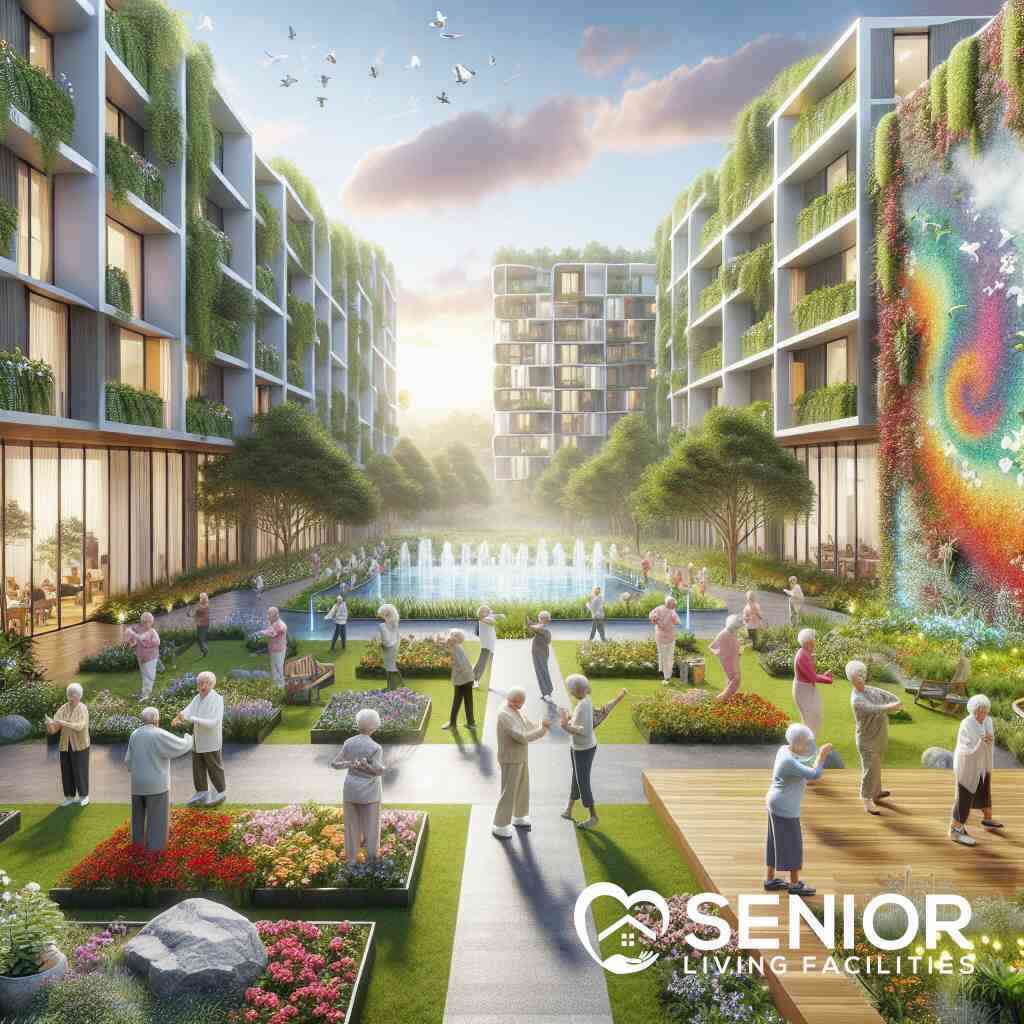
Adapting Environments for an Inclusive Senior Community
Adaptive Living Environments: Tailored Solutions for Aging in Place
The evolution of adaptive living environments is key to facilitating aging in place solutions that cater to the nuanced needs of older adults. Retirement homes are actively transforming to provide safe and comfortable spaces that promote independence while ensuring safety. Technological innovations play a significant role in this transition, offering customized solutions such as home automation systems and smart appliances. These advancements are tailored to the physical abilities of seniors, minimizing the need for physical exertion and enhancing overall eldercare experiences. For instance, adaptive living environments are being crafted to include features like adjustable countertops and voice-activated controls, facilitating easier navigation and usability.
Facilities offering tailored eldercare in Colorado exemplify this trend by emphasizing personalized design and technology integration. By focusing on modular living spaces, these communities accommodate changing health dynamics and mobility levels of residents. As seniors increasingly embrace technology, there’s a proactive shift towards environments where adaptive equipment is seamlessly integrated into daily life. This not only bolsters living standards but also helps in preserving the dignity and comfort of aging adults, marking a pivotal step forward in the evolution of senior care services.
Wellness-Focused Senior Living: Beyond Traditional Healthcare
In 2025, senior living facilities are transcending conventional healthcare models to focus on holistic wellness programs. This innovative approach integrates physical, mental, and social well-being, recognizing that these aspects are interdependent in enhancing quality of life. Wellness-focused senior living incorporates diverse activities, from yoga and meditation to art therapy and social clubs, fostering a nurturing environment for aging adults.
Facilities, like those offering progressive senior living in Florida, adopt comprehensive wellness strategies that align with residents’ interests and health goals. The shift from traditional healthcare towards a more personalized approach is evident in the variety of recreational and therapeutic options available. These programs, designed to engage seniors physically and mentally, aim to reduce loneliness, increase activity levels, and improve overall satisfaction. Serving as community hubs, wellness-focused facilities are redefining the senior living narrative, placing a greater emphasis on cultivating vibrant and fulfilling lifestyles for residents.
Accessible Senior Housing Design: Creating Inclusive Space
Designing accessible senior housing requires thoughtful planning that accommodates diverse abilities and preferences, creating inclusive environments for all residents. From wider doorways to non-slip flooring, the architectural features of these spaces ensure safety and accessibility. The emphasis on inclusive design is particularly strong in places like accessible housing design in Minnesota, where facilities are leading the way with innovative architectural solutions.
Design strategies focus on eliminating barriers that may hinder mobility or independence. Facilities are embracing universal design principles, which cater to residents’ current and potential future disabilities. This forward-thinking approach not only promotes independence and self-reliance but also enhances community integration among seniors. Additionally, by prioritizing such considerations, senior living communities ensure that they are welcoming to every individual, regardless of their age or ability, ultimately fostering environments where every resident can thrive in their golden years.
Holistic and Sustainable Approaches in Modern Senior Care
Sustainable Senior Housing: Eco-Friendly Innovations
The drive towards sustainable senior housing is becoming increasingly prominent as environmental consciousness grows. In 2025, eco-friendly innovations are at the forefront of senior living adaptations, offering sustainable solutions that reduce carbon footprints while enhancing quality of life. Facilities are integrating green building practices, such as the use of solar panels and energy-efficient systems, which not only reduce environmental impact but also lower operational costs. These savings can be redirected towards improving the quality of care and services offered to residents. Concepts like vertical gardens and rooftop green spaces are used to enhance air quality and provide serene environments for relaxation, exemplifying the integration of nature into urban senior housing settings. For instance, eco-friendly senior housing solutions are exploring these innovations, paving the way for environmentally responsible and senior-centered living environments.
Furthermore, waste management and water conservation techniques are being adapted to ensure that facilities operate sustainably. Recycling programs and rainwater harvesting help define the future trends in senior living facilities, marrying environmental responsibility with operational efficiency. By adopting these sustainable practices, senior communities not only contribute to ecological preservation but also encourage a sense of belonging and responsibility among their residents. This conscientious shift towards ecological living marks a significant transition in how senior care facilities are perceived, blending environmental stewardship with senior wellness.
Holistic Senior Lifestyle Solutions: Nurturing Mind, Body, and Spirit
The path to holistic senior lifestyle solutions lies in nurturing the mind, body, and spirit, which is increasingly being recognized as crucial in modern senior care. Facilities are focusing on offering diverse programs that support mental, physical, and emotional well-being concurrently. Interactive activities like meditation and wellness workshops are becoming standard practices, helping seniors maintain cognitive health and emotional balance. For example, initiatives like art therapy and music sessions engage the elderly in expressive activities that stimulate mind and soul, simultaneously fostering creativity and social interaction.
Alongside spiritual nurturing, physical health remains a cornerstone of holistic care. Senior living facilities are incorporating personalized fitness regimes tailored to individual capabilities, promoting physical activity as a daily norm. Fitness classes such as tai chi and yoga cater to varying fitness levels, ensuring active participation while reducing injury risks. It’s evident that these holistic lifestyle solutions inherently support seniors’ overall vitality, ensuring a fulfilling and balanced life as they age.
In addition, nutritional planning is emphasized, offering diets that not only cater to health requirements but also include seasonal and organic produce, aligning with sustainable practices. This integration of holistic care practices positions innovative eldercare solutions at the heart of the modern senior living ecosystem, recognizing the interconnectedness of mind, body, and spirit in achieving comprehensive wellness.
Next-Generation Assisted Living: Merging Modernity with Comfort
Next-generation assisted living facilities are emblematic of modernity and comfort merging to redefine senior care dynamics. These facilities integrate advanced infrastructures with cozy, home-like environments, creating comfortable spaces that accommodate residents’ evolving needs. Modern assisted living in California, for example, adapts futuristic technologies, like motion-sensor lighting and automated climate controls, which ensure both safety and comfort while minimizing energy consumption.
The core of next-generation assisted living lies in its adaptability and technological integration. Facilities are evolving to include flexible living spaces that adjust to varying mobility and health needs, ensuring that residents continue to thrive despite physical limitations. The incorporation of smart home technologies for senior care maximizes autonomy while enhancing comfort, facilitating a seamless balance between advanced support systems and individual freedom within the living space.
In providing multifaceted services, cutting-edge assisted living also focuses on community engagement and social connectivity, using technology to foster communal activities and support networks. Digital platforms enable residents to attend virtual events, connect with family, and participate in interactive sessions with healthcare professionals, ensuring continuity of social interaction. The integration of these digital advancements elevates the standard of living, epitomizing the concept of modern geriatric care in New York. As comfort meets innovation, these next-generation facilities redefine the paradigm of assisted living, offering residents enriched, modern lifestyles that are both supportive and independent.
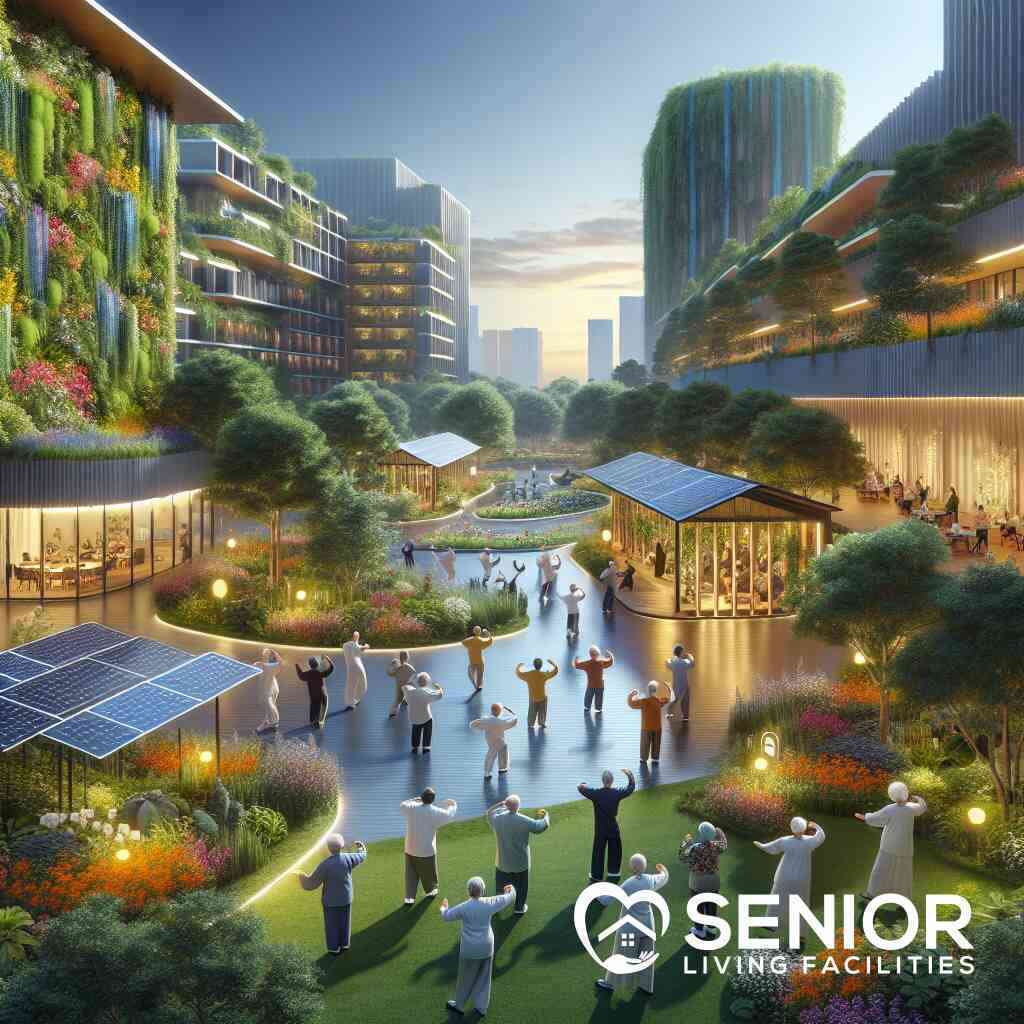
Conclusion: Pioneering the Future of Gerontological Care
Revolutionary Senior Living Concepts: Redefining Care for the Elderly
As we navigate the future of senior living, it’s evident that revolutionary senior living concepts are redefining care for the elderly. Going beyond traditional models, these forward-thinking approaches embrace technological and environmental innovations that foster independence and quality of life. The incorporation of advanced smart systems and eco-friendly practices offers seniors both comfort and enhanced living experiences in next-generation living in Michigan.
These groundbreaking concepts in gerontological care facilities are driven by a commitment to personalized and compassionate service. By understanding and anticipating the evolving needs of older adults, these communities provide tailored environments that encourage autonomy while ensuring safety. The future of senior living rests on these transformative ideas, setting the stage for a more dynamic, engaging, and fulfilling geriatric experience.
Fostering Adaptive Equipment for a Better Quality of Life
Fostering adaptive equipment is a key aspect of enhancing the quality of life for seniors. This modern approach ensures that daily living for seniors is both manageable and enriching. Devices such as mobility aids and user-friendly home adjustments empower seniors to maintain independence. The integration of adaptive living environments opens avenues for safety and convenience in everyday activities.
Facilities are responding by implementing tools that cater to a wide range of physical abilities, facilitating a supportive and inclusive senior environment. The adaptive equipment available today addresses specific needs, providing elderly individuals with the means to live confidently and comfortably. Embracing this innovation not only enhances personal well-being but also promotes a more inclusive community where all seniors can thrive.
Anticipating Future Trends in Progressive Nursing Home Environments
Anticipating future trends in progressive nursing home environments involves an active commitment to comprehensive senior care strategies. These environments are increasingly prioritizing holistic wellness, technological integration, and green practices, positioning themselves at the forefront of modern care solutions. Facilities focus on creating spaces that are not only health-centric but also environmentally conscious, reflecting a dedication to sustainable living.
Incorporating advanced medical technologies and digital communication platforms allows for improved health outcomes and resident connectivity. The shift towards these interwoven strategies ensures that nursing homes are well-equipped to meet the diverse needs of the aging population, aligning with the overarching objectives of inclusive senior communities. By predicting and adapting to these trends, facilities can offer an elevated level of care, ensuring that seniors experience comfort, dignity, and engagement throughout their golden years.
Frequently Asked Questions
Question: What innovative eldercare solutions are discussed in The Definition of Senior Living Adaptations in 2025?
Answer: The Definition of Senior Living Adaptations in 2025 highlights several innovative eldercare solutions that are poised to transform senior living environments. These include the integration of smart home technologies for seniors, offering greater independence and safety through automated systems and emergency alerts. The article also mentions the role of AI and robotics in modern senior care solutions, providing assistance with daily tasks and enhancing quality of life. Furthermore, the focus on adaptive living environments ensures that seniors can enjoy customized spaces that cater to their physical and emotional needs, promoting aging in place solutions for a diverse aging population.
Question: How do Senior Living Facilities incorporate sustainable practices into senior housing options for aging in place solutions?
Answer: Senior Living Facilities is deeply committed to integrating sustainable practices within its senior housing options to foster aging in place solutions. By adopting eco-friendly innovations, such as the use of solar panels and energy-efficient systems, the facilities not only reduce their carbon footprint but also enhance the quality of life for seniors. These sustainable senior housing solutions include vertical gardens that improve air quality and create serene environments for relaxation. As part of their offering, Senior Living Facilities ensures that every community not only prioritizes environmental responsibility but also focuses on enhancing independence and well-being for seniors.
Question: What role does technology play in the evolving senior care strategies promoted by Senior Living Facilities?
Answer: Technology plays a pivotal role in the evolving senior care strategies endorsed by Senior Living Facilities. The incorporation of digital integration in senior communities allows for better health management, immediate access to digital health records, and telehealth services, which are particularly beneficial for seniors in remote areas. Smart home technologies enhance safety and communication, while IoT devices and AI-driven analytics provide personalized care plans and proactive health monitoring. These technological advancements in senior living ensure that seniors receive comprehensive, state-of-the-art eldercare services that seamlessly integrate into their daily life, promoting autonomy and improved care quality.
Question: How are holistic senior lifestyle solutions incorporated into the senior living community experience?
Answer: Holistic senior lifestyle solutions are an integral part of the senior living community experience offered by Senior Living Facilities. These solutions encompass a range of programs that support mental, physical, and emotional well-being. From fitness classes like yoga and tai chi, designed to cater to varying abilities, to meditation and wellness workshops that maintain cognitive health, the facilities offer a rich tapestry of activities that nurture mind, body, and spirit. Art therapy and music sessions provide an expressive outlet, fostering creativity and social interaction. By embracing such comprehensive care practices, Senior Living Facilities ensure that seniors enjoy a balanced, fulfilling lifestyle in a nurturing environment.
Question: What are the benefits of choosing Senior Living Facilities for tailored eldercare experiences?
Answer: Choosing Senior Living Facilities for tailored eldercare experiences offers numerous benefits for seniors and their families. The facilities are designed to respect the individuality of seniors, offering a variety of housing options that suit diverse needs and preferences. Personalized eldercare experiences are crafted to ensure that every senior receives attention that aligns with their unique health requirements and expectations. With an emphasis on community engagement and private retreat options, the facilities provide environments that feel like home while offering access to advanced healthcare services and social connections. By prioritizing personalized and compassionate service, Senior Living Facilities fosters inclusive senior communities where every resident can thrive.
